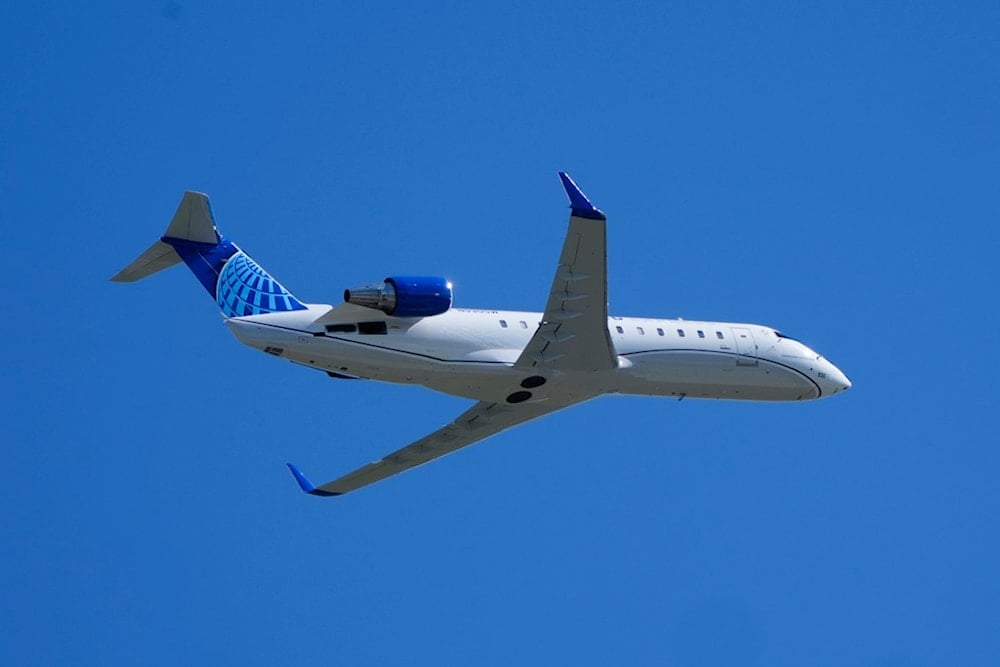Near-miss over N. Dakota: Civilian jet forced to evade military bomber
A SkyWest passenger jet narrowly avoided a collision with a US B-52 bomber near Minot, North Dakota, highlighting growing concerns over airspace coordination as civilian-military near-miss incidents rise across the US.
-

A United Express SkyWest Airlines CRJ-200LR plane departs from Freeland, Mich., May 1, 2024. (AP Photo/Paul Sancya)
A serious mid-air scare was narrowly avoided on Friday when a SkyWest-operated regional jet was forced into an abrupt evasive maneuver to dodge a US Air Force B-52 bomber while preparing to land in Minot, North Dakota. Delta Flight 3788, en route from Minneapolis, was already cleared to land by air traffic control when the pilot spotted the fast-approaching military aircraft crossing its path.
SkyWest later confirmed that the crew had to "perform a go-around when another aircraft appeared in their flight path." The Embraer E-175 ultimately landed safely, but the pilot's post-landing announcement made clear just how close the encounter had been. "He [an air traffic controller] said 'Turn right,' and I said 'There's an airplane over there,' and he said 'Turn left,' and then … I looked over and saw the airplane that was kind of coming on a converging course with us," the pilot said in a video recorded by a passenger. "Given his speed, it was a military plane. I don't know how fast they were going, but they were a lot faster than us. I felt it was the safest thing to do to turn behind it. So, sorry about the aggressive maneuver."
The pilot acknowledged that while such maneuvers are "not normal," they were essential to avoid what could have been a deadly collision.
✈A passenger jet performed an “aggressive maneuver” to avoid a mid-air collision with a US military bomber over the state of North Dakota, according to recorded audio of the commercial pilot.
— News.Az (@news_az) July 21, 2025
Delta Flight 3788, operated by SkyWest, took off from Minneapolis and was approaching… pic.twitter.com/e9MhmDuNnh
Crowded Skies Crisis
This incident is not isolated. It is the latest in a growing list of civilian-military airspace conflicts raising alarm across the aviation sector. In March, a Delta A319 received an emergency collision alert after USAF T-38 fighter jets flew dangerously close near Washington, DC Just two months later, a US Army Black Hawk helicopter on a "scenic route" near the Pentagon came within 200 feet of two commercial airliners, prompting them to abort landings. And in a far graver event in January, a regional jet collided mid-air with a Black Hawk near Reagan National Airport, killing all 67 people on board both aircraft.
Investigations into these events have exposed deep systemic issues in airspace coordination, including:
- Gaps in communication between civilian air traffic controllers and military flight operations
- Inadequate real-time tracking, especially for military aircraft that often lack ADS-B transponders
- Understaffed air traffic control towers struggling to manage shared flight corridors
- A reactive regulatory approach, where safety improvements follow, rather than prevent, disasters
The Federal Aviation Administration (FAA) and US military have launched inquiries into the North Dakota near-miss, and lawmakers have introduced proposals to tighten rules on military flights, especially near major civilian airports.
Read more: FAA investigates new whistleblower claims on Boeing's 787, 777
As the skies grow more crowded and complex, the urgency to overhaul coordination between commercial aviation and military operations is no longer theoretical. Friday's evasive maneuver may have saved lives, but it is also a warning signal flashing red.

 3 Min Read
3 Min Read








